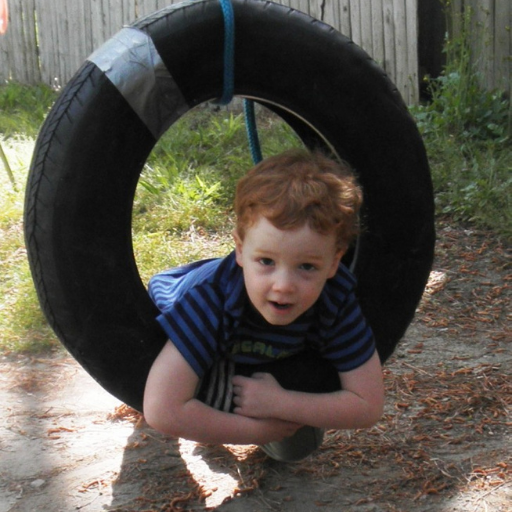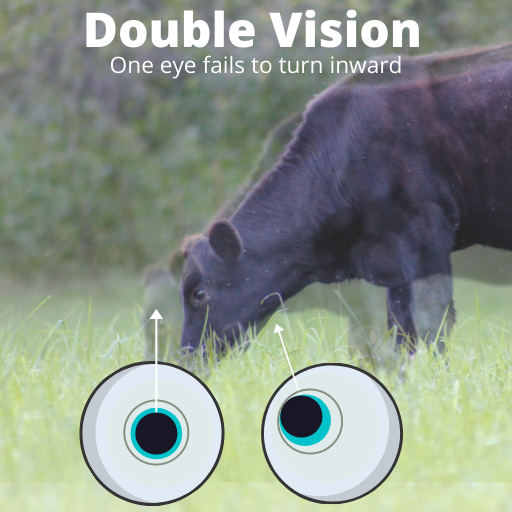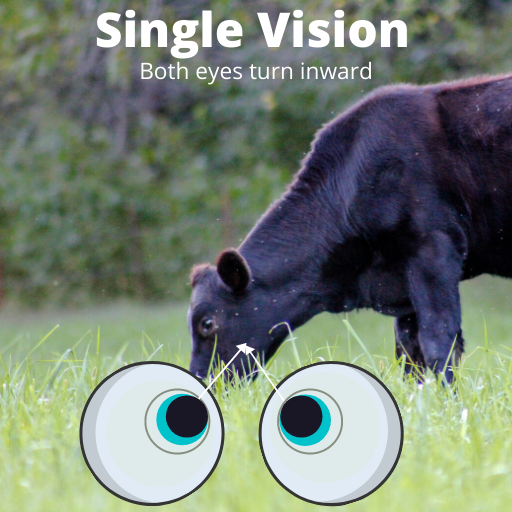Attention Deficit Hyperactivity Disorder
Behavioral characteristics of Attention Deficit Hyperactivity Disorder occur before age five and is “a persistent pattern of inattention and hyperactivity-impulsivity that interferes with functioning or development, as characterized” by lack of attention that occurs in multiple environments; lasting longer than six months without traumatic episode; and consisting of both hyperactivity and impulsivity (American Psychiatric Association. (DSM V)
Are Attention Deficits With Hyperactivity Affecting You?
An insightful report, your Moore Auditory-Visual Questionnaire Report, shares the intensity of behavioral difficulties related to specific areas of concern.
Need Help, Next Step? Call Cheri
Using hearing test results, Cheri Moore helps children and adults improve their ability to respond to auditory integration training and maintain progress.
“The brain does what it needs to develop and promote feelings of safety. Movement may be exactly what your child needs to stimulate the brain due to a deficit like a hidden hearing loss; chronic poor ear health, or visual processing difficulties.”
Attention Deficit Hyperactivity Disorder
Attention Deficits Hyperactivity Disorder disrupts attention needed for listening. Ironically, weak auditory pathways under-stimulate the brain. Subsequently, the brain signals the body to move. A weak auditory system is associated with sound intolerance. Thus, sounds perceived as too loud distract your attention.
The Attention Deficits Hyperactivity Disorder, The Domino Effect
Domino 1: Sound Energy and the Cochlea
Sound energy that decreases in the middle ear before reaching the cochlea, under-stimulates the cochlea. The cochlea fails to receive strong stimulation.
Domino 2: Understimulation
An under-stimulated cochlea means, sound energy also understimulates the inner ear’s vestibular system.
Domino 3: Stimulation Seeking Behavior
When the vestibular system is understimulated, the brain signals the body to move. Movement stimulates the vestibular system, which then stimulates the brain.
Conclusion: Movement Helps Development
Movement is exactly what the brain needs for development. Especially, when the cochlea and vestibular system are weak. Therapeutic music with movement strengthens the auditory and vestibular systems.
Research Findings
A more detailed explanation of research findings are shared towards the end of this page. Children diagnosed with attention deficit hyperactivity disorder are compared with typically developing children. Researchers found a higher risk of
- Auditory Processing difficulties
- Visual Processing difficulties
- Sound Intolerance
Researchers also found some individuals diagnosed with Central Auditory Processing Deficits and Attention Deficit Hyperactivity Disorder. When you think about hearing loss understimulating the brain, it makes sense for the brain to send out signals causing movement, hyperactivity. Likewise, all types of hearing loss are associated with sound intolerance.

Overcoming CAPD with Autism
My daughter was diagnosed with autism and central auditory processing disorder (CAPD). We schooled her at home, and even with my background in teaching, it was very difficult. I would have to fight with her to make her begin her school work. While teaching her, she...
A Future for My Daughter: Diminishing L.D. / Sound Sensitivities
Ashylyn did not talk much when she was little and was shy about interacting with people. I sent her to a private Christian school for kindergarten hoping she would come out of her shell. Unfortunately, there were more problems than just shyness. I remember feeling...
CAPD Diagnosis at 21 years; Success with Hearing Aids and AIT
Finding out that my 21-year-old son had a hidden hearing loss (CAPD) was a relief. He is very intelligent. Not getting the right help was causing feelings of depression and hopelessness. Finally, an answer to the questions I have had for so long! He never really fit...
A Relieved Grandmother: CAPD Success with Hearing Aids
I was at my wit’s end when I met Cheri Moore. My oldest granddaughter, whom I had guardianship, had been tested for every possible psychological learning disability, including autism. She was prescribed medication, which did not seem to help. Still, no diagnosis. I...
A Mother’s Journey Into the World of Dyslexia
Diagnosing Dyslexia During the spring of 2007, I attended Dianne Craft’s conference where I learned that dyslexia affected the auditory processing center and the visual processing center. Perhaps I had found help for my daughter’s reading and spelling struggles. She...
Vestibular Stimulation is Calming
Interestingly, children with attention deficit hyperactivity disorder benefit from vestibular stimulation. Hyperactivity, movement, is seeking behavior giving the vestibular system and the brain what they need for development.
In fact, vestibular movements help most of us feel more cheerful. Do you experience a happier mood after vestibular play? A simplified explanation, vestibular play calms the brain by pushing stimulation in a predictable pattern to the brain. Thus, the next time you feel uptight or stressed, I encourage you to enjoy repetitious movement like,
- Steadily rock in a rocking chair
- Steadily swing while sitting on a porch swing
- Jump up and down on a trampoline
- Play hopscotch or jump rope
- Swing back and forth or spin round and round
- Sit-ups, push-ups, jumping jacks, toe touches
- Ride a horse
- Ride a bike on a bumpy, dirt road


Auditory Integration Training Improves Attention
During auditory integration training, parents shared that their child’s behaviors became noticeably calmer with improved attention. However, hyperactivity increased once they finished their listening program. Three months later, the client completes a shorter listening program. During the second program, the client’s behavior once again became calmer. Additionally, attention and listening behaviors steadily improved after completion of the second program.
In auditory studies, researchers found that it takes time for auditory neural pathways to become strong enough to noticeably change behaviors. Berard-based Auditory Integration Training improves attention in those with a neurodevelopmental diagnosis like Attention Deficit Hyperactivity Disorder.
Effects of Attention Deficit Hyperactivity Disorder on Expressive Speech
Researchers found that particpants with Attention Deficit Hyperactivity Disorder struggled with auditory processing skills like expressive speech. Likewise, I see these difficulties in my clients. For example, a client may misspeak, unable to say what they meant to say. Furthermore, some clients struggled to speech fluently only when first starting to speech. Thus, they would repeat words, a phrase, or even a sentence. One explanation, client needed extra time to organize their thoughts. As a result, they were able to logically share their thoughts. For improvements, Cheri uses Dr. Berard’s speech stimulation auditory training protocols when working with clients. Interestingly, approximately 20 percent more volume is sent to the right headphone, Thus, the right ear receive more sound stimulation. Resulting, in more direct stimulation to the speech center when compared to the left ear. It has been very rewarding to observing improvements in clients’ speech fluency.
Sounds are Distracting
Sounds and background competing speech can distract attention. For example, have you ever tried to have a conversation while washing dishes? Thus, the running water and having your back turned to the person talking makes it more difficult to listen. Imagine feeling like this all day long, especially in a classroom.
Contrary to what most people believe, a weak auditory system results in an inability to ignore sounds. To illustrate why this happens think about the muscles in your legs. What happens if you suddenly start running two miles after spending the winter reclining in your favorite chair? Basically, you are out-of-shape. While running your legs start to hurt. At some point, the pain in your legs will cause you to stop running.
In the same way, an individual experiences discomfort, sound intolerance, when sound energy pushes sound energy along weak auditory neural pathways. Each person’s response differs depending on the strength of their hearing system. Individuals diagnosed with Attention Deficit Hyperactivity Disorder play loudly because they are seeking auditory stimulation. They need to talk loudly to hear themselves speak. In addition, talking loudly covers up distracting background sounds which they are unable to ignore. However, when they listen, they get upset when others talk. Their weak auditory neural pathways are unable to suppress competing background speech and sounds.
Researchers found that vestibular activities, deep pressure, sharing, and dietary changes help improve stress hormonal functions.
(The Whole Brain Child, Trauma-Based Intervention—neurochemistry of fear)
Weak Auditory Processing Skills and Attention Deficits Hyperactivity Disorder
Bellis et al., (2011), found that auditory processing deficits exist in individuals with a diagnosis of Attention Deficits with Hyperactivity. There is evidence that auditory processing difficulties contribute to a reduction in attention in those diagnosed with attention deficits with hyperactivity.
Research introducing a sound (hum) resulted in the following findings:
- Norm group had equal abilities in auditory and visual attention skills.
- Individuals with a diagnosis of Attention Deficits with Hyperactivity had weaker auditory attention skills when compared to the norm group, but visual attention was almost the same as the norm group.
- Individuals with central auditory processing deficit had the weakest auditory attention scores out of three groups. Visual response scores were also weak, although slightly stronger than auditory attention.
Attention Deficit Hyperactivity Disorder and Central Auditory Processing Deficits
Behaviors associated with Central Auditory Processing Deficits, hearing loss past the cochlear, are similar to behaviors associated with Attention Deficit Hyperactivity Disorder. Below, the chart shows you similarities between the two. However, there is one main difference. The child with Central Auditory Processing Deficits works hard, stays focused and seated in their chair. However, the child with Attention Deficit Hyperactivity Disorder impulsively moves in and out of their chair for no apparent reason.
Attention Deficits with Hyperactivity can coexist with a diagnosis of Central Auditory Processing Deficits (CAPD). An audiologist completes testing around age eight or older.
Retrieved from The American Speech and Hearing Association, 2011 Conference,
(Neurobiology, Differential Diagnosis, and Treatment of Co-morbid CAPD & ADHD. Presenters: Gail Chermack, PhD., Washington State University; Frank Musiek, PhD.,Univ. of Connecticut; Terri Bellis, PhD., Univ. of South Dakota)
| Shared Behavioral Characteristic | ADHD | Hearing Loss |
|---|---|---|
| Fidgets, squirms | yes | yes |
| Needs to be busy, move | yes | yes |
| Thinks out loud, talks | yes | yes |
| Interrupts | yes | yes |
| Difficulty listening in noise | yes | yes |
| Inappropriate impulsive actions | yes | no |
| Suddenly gets out of chair | yes | no |
Attention Deficit Hyperactivity Disorder with Visual Processing Difficulties
In a research study, individuals diagnosed with visual processing difficulties have a diagnosis of Attention Deficit Hyperactivity Disorder.
The most common visual processing difficulty, Convergence Insufficiency makes it difficult to sustain clear, single vision while looking at a target. For example, a target can be large like the cows below. However, the target could be small and very close like words in a book. Thus, convergence skills keep vision single and clear while reading and writing. Despite 20/20 visual acuity, clients with convergence insufficiency see print that blurs or doubles while reading.
Look at the two images of cows below. Now, look at the pupils within each eye. Do you see the difference between the pupils in the picture on the left versus the right? Next, look only at the picture on the left. Do you see how there is a blurred lighter behind the actual cow? You see two cows because one pupil failed to turn inward.
In conclusion, the picture on the right shows both pupils turning inward, converging. Thus, only one, clear cow is seen. However, the picture on the left shows only one eye turning in. Thus, the person has convergence insufficiency, double vision.


In one study, researchers found that 10% of 266 children with a diagnosis of convergence insufficiency also had a diagnosis of ADHD. Researchers found that 106 children out of 1,700 children with a diagnosis of ADHD were being affected by convergence insufficiency.
(Granet, D.B., Gomi, C.F., Ventura, R., Miller-Scholte, A. (2005). The relationship between convergence insufficiency and ADHD. Strabismus 13(4); 163-8)

Without Intervention, Children and Teens with Attention Deficit Hyperactivity Disorder are High Risk for:
- Mild language, motor, or social delays during childhood
- Emotional distress, behavioral problems, and social acceptance during the teen years
- Substance abuse, self-medicating, and suicide attempts during the teen years
According to the American Optometric Association, relying on vision screenings that only test for how well one sees, 20/20 vision, fails to provide accurate information concerning visual difficulties 63% to 73% of the time.
“The American Optometric Association (AOA) recommends that all children have a comprehensive eye exam (eye alignment, eyesight, eye health) by an eye doctor (optometrist) as opposed to a vision screening, before beginning first grade.“
“Undiagnosed and untreated vision disorders increase the potential for misdiagnosis of special needs and Attention Deficit Hyperactivity Disorder (ADHD), placing unnecessary stress on families and classrooms.” (https://www.aoa.org/patients-and-public/resources-for-teachers)
Cheri Moore’s Experiences and Observations
Cheri Moore’s experiences and observations improved clients’ response to vision therapy. Clients with hearing loss successfully maintained progress when hearing aids like the Roger FM Hearing System were consistently worn.
Cheri’s desire to improve clients’ emotional responses during auditory integration training caused her to track clients for years after they completed auditory integration training. Cheri discovered a high rate of co-existing visual processing difficulties and sound intolerance, with or without a hearing loss.
After some clients experienced increased visual processing difficulties during auditory integration training, Cheri Moore collaborated with optometrists specializing in vision therapy to track each client’s progress. Individualized Auditory-Visual Protocols have resulted in improved responses to auditory integration training and vision therapy.

Overcoming CAPD with Autism
My daughter was diagnosed with autism and central auditory processing disorder (CAPD). We schooled her at home, and even with my background in teaching, it was very difficult. I would have to fight with her to make her begin her school work. While teaching her, she...
A Future for My Daughter: Diminishing L.D. / Sound Sensitivities
Ashylyn did not talk much when she was little and was shy about interacting with people. I sent her to a private Christian school for kindergarten hoping she would come out of her shell. Unfortunately, there were more problems than just shyness. I remember feeling...
CAPD Diagnosis at 21 years; Success with Hearing Aids and AIT
Finding out that my 21-year-old son had a hidden hearing loss (CAPD) was a relief. He is very intelligent. Not getting the right help was causing feelings of depression and hopelessness. Finally, an answer to the questions I have had for so long! He never really fit...
A Relieved Grandmother: CAPD Success with Hearing Aids
I was at my wit’s end when I met Cheri Moore. My oldest granddaughter, whom I had guardianship, had been tested for every possible psychological learning disability, including autism. She was prescribed medication, which did not seem to help. Still, no diagnosis. I...
A Mother’s Journey Into the World of Dyslexia
Diagnosing Dyslexia During the spring of 2007, I attended Dianne Craft’s conference where I learned that dyslexia affected the auditory processing center and the visual processing center. Perhaps I had found help for my daughter’s reading and spelling struggles. She...

Cheri Moore, B.S. Spec. Educ. Teacher, MSW, Certified Berard Practitioner since 2011